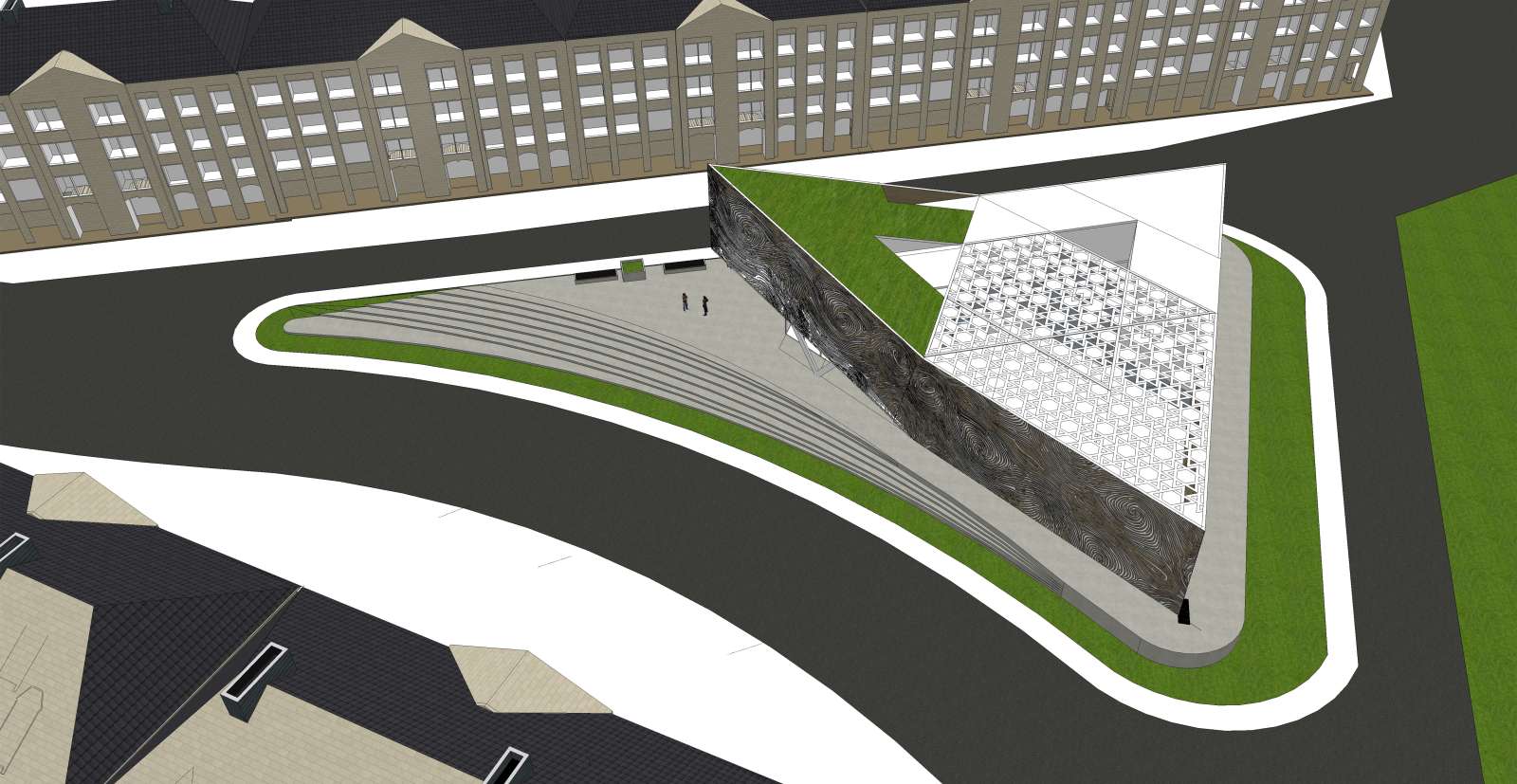Herrmanns Architekten have proposed a polygonal concept as a feasibility study. The form of the synagogue is to be understood as a response to the triangular site.
It is placed so that a square is formed at a corner of the property as an open space. The glazed front entrance welcomes the people. The floor plan disposition meets the user requirements of the Jewish community.
The prayer room in the angular monolith is illuminated by a skylight. The demand for the symbolism of a synagogue building is met by the tattoo facades.
Steel plates are proposed as the facade material which is provided with the image of fingerprints to represent the horrific acts of the Holocaust.
The intention of the author's design is a solitaire to create special connotation. At the same time, the new synagogue will significantly enrich the indifferent urban space.
The architects are of the opinion that Architecture becomes art when the idea of a building touches a meta-level.
If it doesn’t touch a meta-level it is only a building. So the form of the synagogue must be loaded with information. A building must also communicate.
If it doesn’t produce any kind of afterimage like a good book or a fascinating painting or a wonderful film, it can't be good. Therefore the design must create a special connotation.
Location: Koblenz, Germany
Architects: Herrmanns Architekten
Architects In Charge: Henner Herrmanns, Hung Nguyen
Cost: € 6M (30% by the state)
Year: 2014
Architects: Herrmanns Architekten
Architects In Charge: Henner Herrmanns, Hung Nguyen
Cost: € 6M (30% by the state)
Year: 2014











